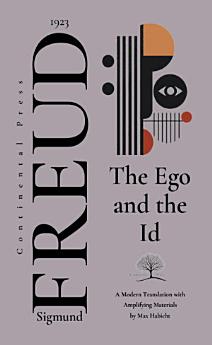The Ego and the Id
May 2024 · The Collected Complete Works of Sigmund Freud Book 10 · Continental Press
Ebook
108
Pages
family_home
Eligible
info
reportRatings and reviews aren’t verified Learn More
About this ebook
Das Ich und das Es (The Ego and the Id), published in 1923, represents Freud's most comprehensive and definitive statement of his structural theory of the psyche, fundamentally revising his earlier topographical model of consciousness and unconsciousness. Written during a period when Freud was battling both cancer and the increasing complexity of psychoanalytic theory, this work introduced the now-famous tripartite model of the psyche: the id (das Es), ego (das Ich), and superego (das Über-Ich). This new framework allowed Freud to better account for the role of aggression, the complexity of moral development, and the various internal conflicts that shape human behavior. The work emerged partly in response to clinical observations that challenged his earlier theories, demonstrating Freud's willingness to revise his fundamental concepts based on therapeutic experience. The book's reception marked a significant turning point in psychoanalytic theory, effectively establishing the vocabulary and conceptual framework that would dominate psychoanalytic thinking for decades to come. While some of Freud's contemporaries struggled with the complexity of the new model, it quickly became central to psychoanalytic practice and theory. The work's influence extended far beyond clinical practice, profoundly impacting fields such as psychology, philosophy, and cultural criticism. Its concepts became deeply embedded in popular culture, with terms like "ego" and "id" entering common usage, though often in ways that departed from Freud's original meanings. The timing of its publication, coming late in Freud's career, meant that this model represented his final major theoretical innovation, serving as a kind of capstone to his life's work in understanding the structure and dynamics of the human psyche. This edition includes an introduction by the translator on the philosophic differences between Carl Jung and Sigmund Freud, a glossary of Freudian Psychological terminology and a timeline of Freud’s life & works. This fresh, modern translation from the original German manuscript breathes new life into this historically important work. Freud's massive body of work has historically been inaccessible to the lay philosopher, and this edition seeks to provide greater, direct access to his original works. This new Reader's Edition introduces Freud's original work in context, with an illuminating Afterword explaining his philosophic project, nesting it in the historical milieu he wrote within (in this case, Modernism), and his impact on the contemporary world. This Afterword focuses on the relationship and debate between Carl Jung and Sigmund Freud, a conflict which has great relevance to the debates of modern culture. This is accompanied by a timeline of his life and works, an index of philosophic terminology and background (especially on his greatest influence- Schopenhauer), and a short biography.
About the author
Sigmund Freud (1856-1939) was an Austrian neurologist and the founder of psychoanalysis, a groundbreaking approach to understanding the human psyche. Freud introduced concepts such as the unconscious mind, repression, and the tripartite structure of the psyche, which includes the id, ego, and superego. His work, including seminal texts like The Interpretation of Dreams and Beyond the Pleasure Principle, emphasized the role of unconscious drives and childhood experiences in shaping behavior and personality. Freuds theories on sexuality, defense mechanisms, and dream analysis challenged societal norms and profoundly altered the field of psychology, influencing literature, art, and philosophy. Though controversial, his contributions laid the foundation for modern psychotherapy and continue to spark debates and inspire new approaches to understanding human behavior and mental processes.
Rate this ebook
Tell us what you think.
Reading information
Smartphones and tablets
Install the Google Play Books app for Android and iPad/iPhone. It syncs automatically with your account and allows you to read online or offline wherever you are.
Laptops and computers
You can listen to audiobooks purchased on Google Play using your computer's web browser.
eReaders and other devices
To read on e-ink devices like Kobo eReaders, you'll need to download a file and transfer it to your device. Follow the detailed Help Center instructions to transfer the files to supported eReaders.












